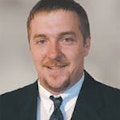The need for technician training is snowballingAs I write this article in
early January, the Northeast United States is experiencing yet another winter
storm. The winter weather, upon which rests much of the country’s collision
repair volume, is furious this year. Repairers in much of the Northeast got a
nice present when they woke up Christmas day and found a blanket of snow
covering the ground. In areas where snow, sleet and freezing rain are not the
driving factors for claims, rain has come to the repair industry’s rescue.Increased volume will certainly
benefit repairers. Last year’s mild winter hurt the industry’s bottom line
when coupled with the general economic slowdown. But, the increased volume many
repairers are facing this winter will pose challenges for repairers seeking to
manage their cycle time, backlog and efficiency.Too
many repair facilities view continuing education as a necessary evil,
only to be bought when the demands of new vehicle technology, repair
equipment or materials require the spending. This notion hurts the
growth of not only the shop, but also its technicians.By far, the largest issue
facing repair facilities remains the availability of qualified
technicians—both experienced and entry-level. A large surge in volume will
only exacerbate the problem as shops try to manage their throughput with the
demands for repair service.Last year a chorus of voices
was raised for the need to support recruitment programs and training initiatives
designed to promote the industry as a viable career path for today’s youth.
Repairers, their associations, insurers and suppliers all focused attention on a
problem that has plagued the industry for many years. The introduction of the
I-CAR Education Foundation’s PACE+ST3 program, the development of
State Farm’s Service Learning initiative and the many other programs forming
around the United States will have an impact upon the pool of available
entry-level technicians.While programs designed to
attract new technicians to the industry are crucial to the long-term success of
the industry, they answer only part of the problems busy repair facilities face
today. Continuing education of your present technicians is also a key,
underutilized component repair facility operators have at their disposal to
increase efficiency, improve throughput and ultimately profits.Yes, I know, the thought of
sending techs to training during the busiest repair season in several years will
prompt many of you to tell me, “You need to get my head out of the clouds.”
You’re right…but only up to a point. Much of the training directed at the
industry is available on nights and on weekends to ease the production concerns
of shop operators. The boost in productivity afforded by new ideas garnered
through training will also make an immediate difference.Too many repair facilities view
continuing education as a necessary evil, only to be bought when the demands of
new vehicle technology, repair equipment or materials require the spending. This
notion hurts the growth of not only the shop, but also its technicians.Training must be viewed, to use
the age-old clich 